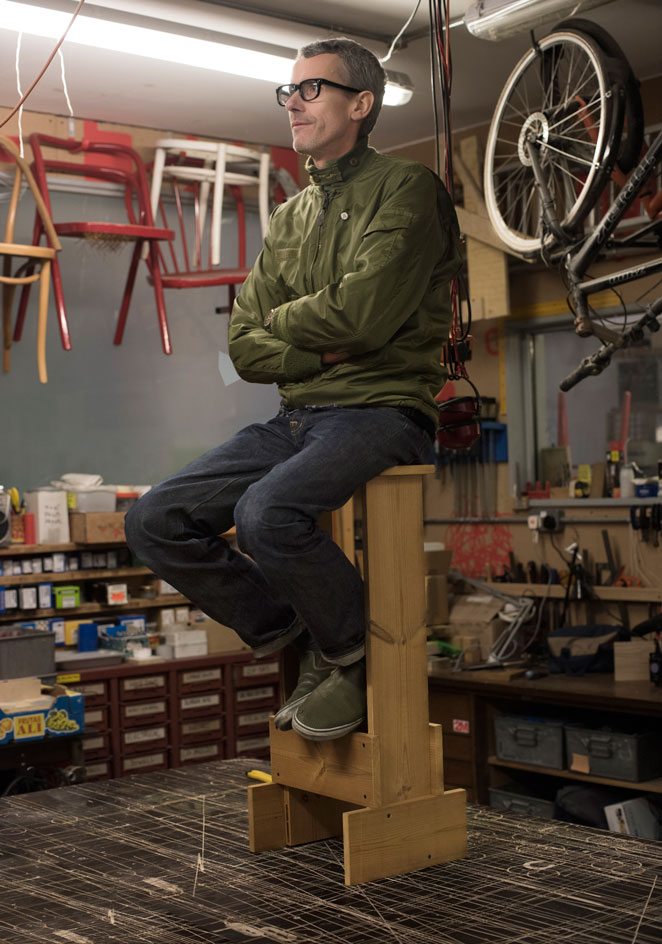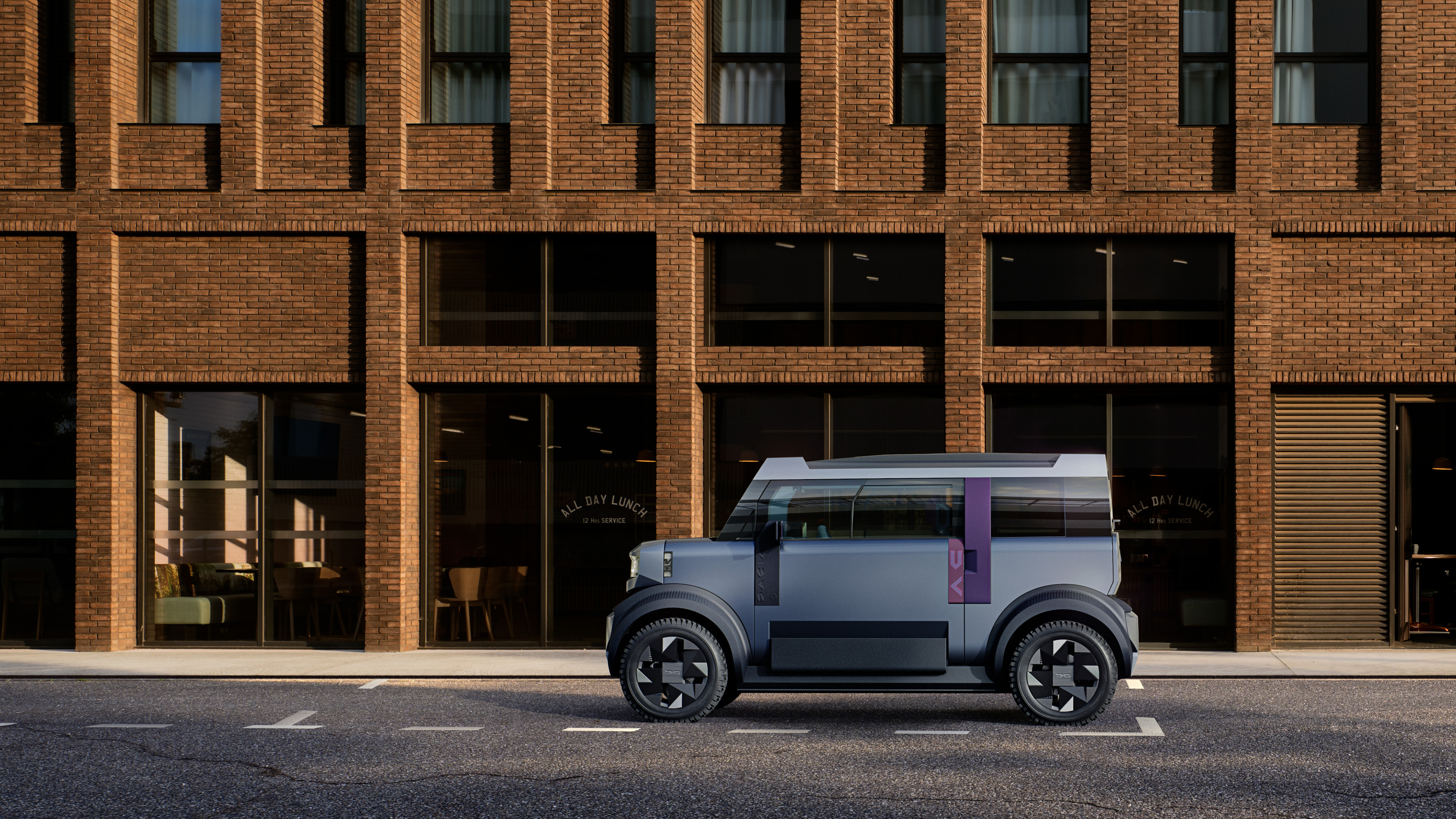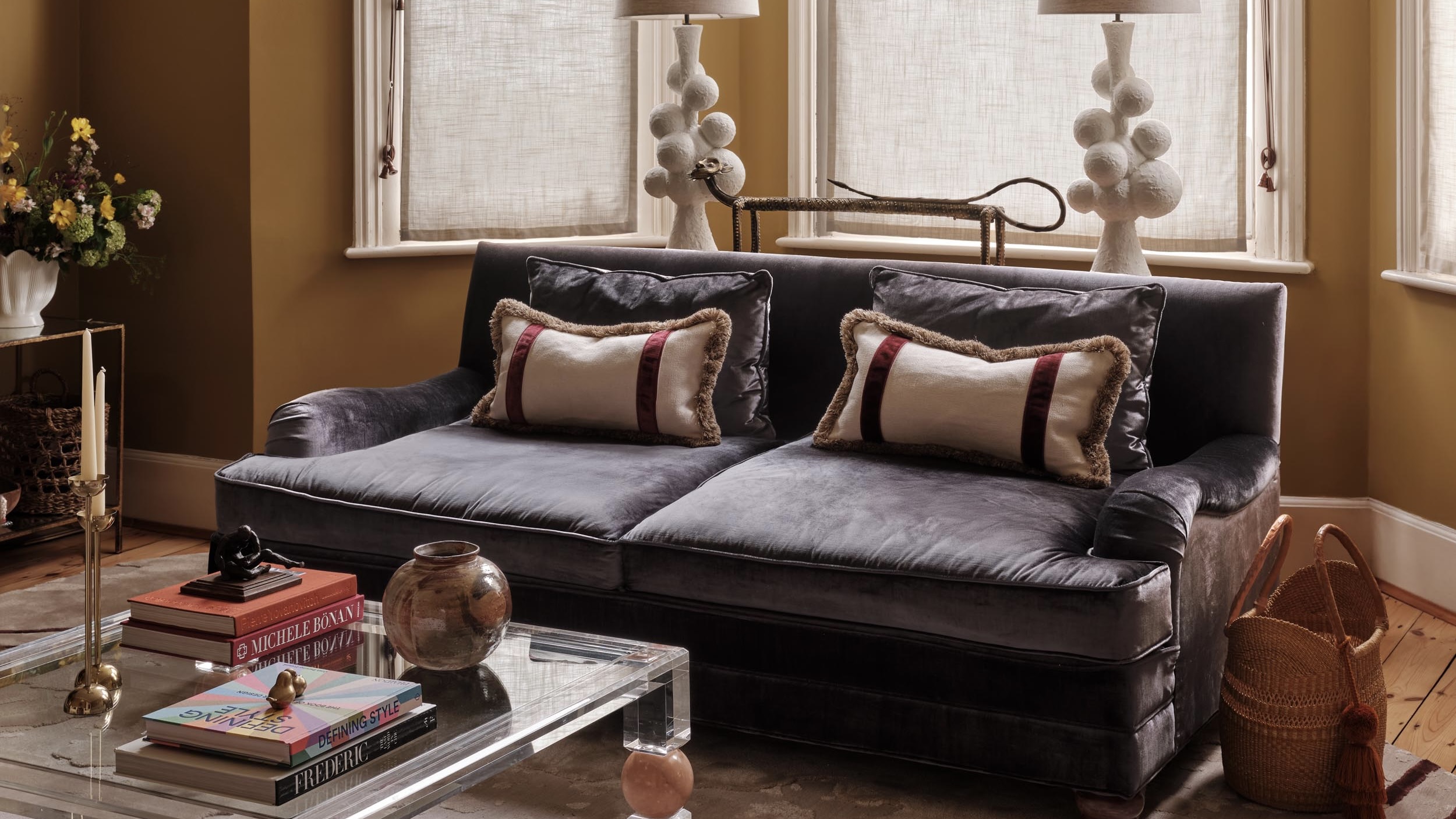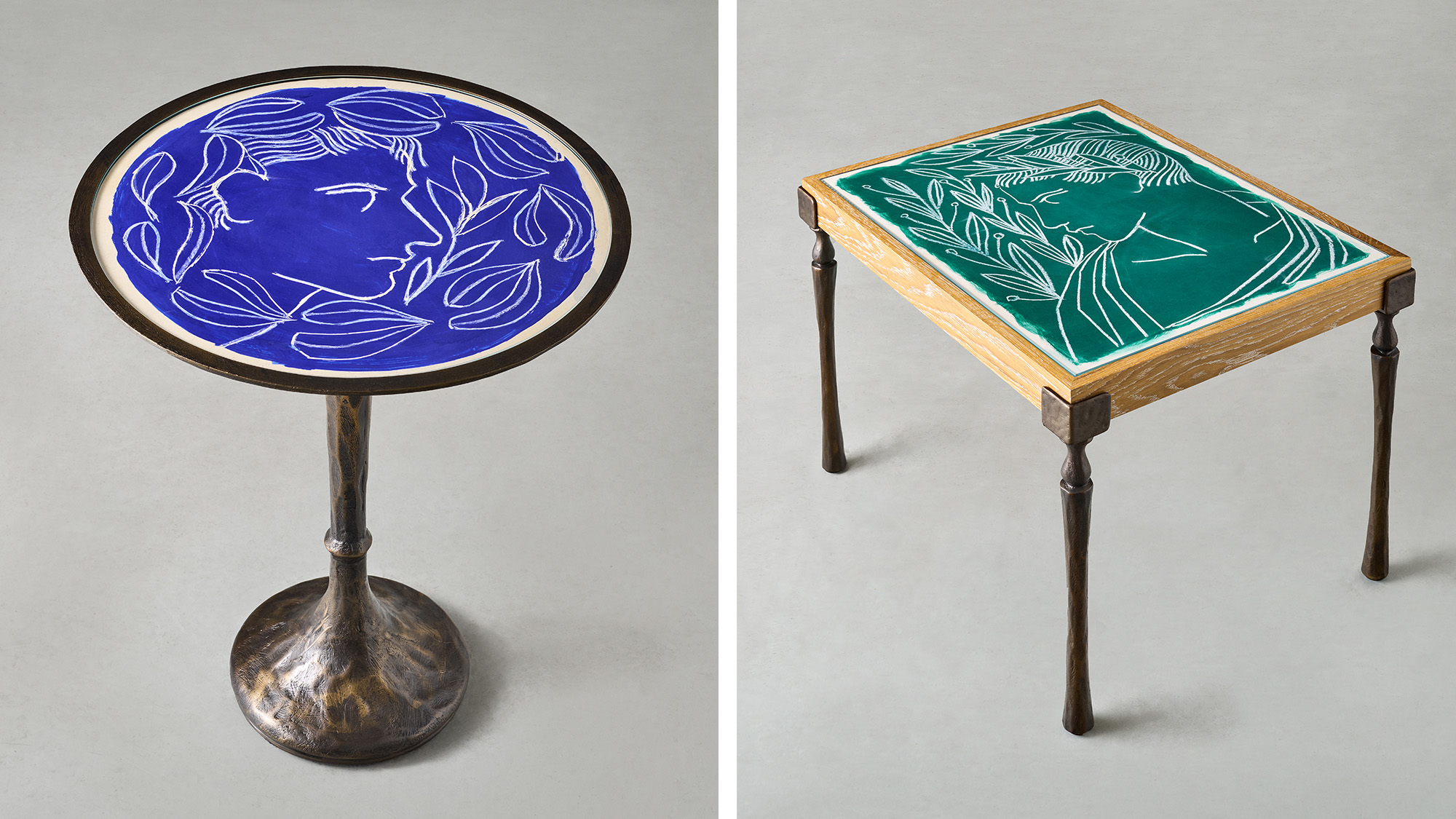Storm force: Ishinomaki Laboratory has turned utility into a fine art

Keiji Ashizawa and Takahiro Chiba, the dynamic duo behind Ishinomaki Laboratory, like to describe their operation as the world’s first DIY furniture company. Chiba, a former sushi chef, heads up operations in a large, former wakame-seaweed hangar in the small city of Ishinomaki in northern Japan. Ashizawa – the co-creator of the Hirosaki Knife Box for Wallpaper* Handmade, back in 2011 – pulls the strings from Tokyo, where one of his key tasks (and one he seems to be loving) is to expand the lab’s network of talented and resourceful designers.
For a serious furniture producer – now supplying the likes of Muji and Blue Bottle Coffee with interiors and products – the set-up at Ishinomaki is remarkably simple. There are a couple of mitre saws set on long sturdy work tables, two large table saws, a stationary planer, and a large drill press. Combined with a small selection of hand tools, this makes up the manufacturing hardware of the shop. But looking at the furniture it becomes clear that no other tools are necessary. Everything is straight cut, screwed together, with the screw heads left visible, while the raw materials look like they were bought from a local builders’ merchant. Most of Ishinomaki’s furniture is made from red cedar, with other pieces in Japanese sugi cedar boards, while recently even L-bar steel rods have been used for table legs and shelving units.
A second floor has been constructed on top of the large shop area, with a small office, packing area and showroom. About 70 per cent of the workshop’s output is custom-made furniture and shop fittings. The rest is sold under the Ishinomaki Laboratory label. The line-up mainly consists of stools, benches, tables and shelves, all in the same DIY-esque vernacular but with clever touches added by the many designers the company has enlisted.
Ashizawa has succeeded in enticing an impressive list of Tokyo’s best to help out, including Torafu Architects, Koichi Futatsumata, Drill Design (recipients of a Wallpaper* 2017 Design Award), Mute and Taiji Fujimori. A few international designers have also provided designs for the lab – most recently British designer Michael Marriott, who presented a whole range of new product ideas, all made using 18mm thick, 140mm wide Miyagi cedar boards. The full collection of beds, benches, chairs, hangers and even a DIY workbench was exhibited and auctioned in Tokyo late last year. The more popular and easier to produce items will be added to the Lab’s catalogue later this year.
There is good reason for the company’s rough-andready utilitarian approach. Ishinomaki Laboratory developed out of the Ishinomaki Bench, designed by CEO Keiji Ashizawa as seating for a temporary outdoor cinema set up following the massive Tohoku earthquake and tsunami in March 2011.

Prototype shelves by Marriott for the show in Tokyo. It is being considered for production as smaller, modular units that can be attached to each other.
Ishinomaki was one of the areas worst hit in the disaster. Almost half of the city was flooded by the tidal waves that wrecked the coastal areas in this part of Japan. About 30,000 residents lost their homes, and when I first visited the city just a month after the earthquake hit, Ishinomaki was covered in debris, smashed cars, boats and the remains of the more than 3,500 people who lost their lives here.
In October 2010, Ashizawa had completed the renovation of one of the town’s more popular restaurants, and following the quake he quickly got in contact with the owner to see if he could help with anything. ‘Half of the restaurant was completely damaged and we decided to tear down that part and rebuild from there on,’ he explains. ‘Luckily the flooding didn’t reach the first floor of the restaurant, so on my visits I could stay there.’
During his visit to the town in early April 2011, Ashizawa noticed two people hard at work fixing up their own buildings. ‘I thought that maybe if there was a kind of community workshop with tools and materials readily available, more residents would be able to join in the reconstruction process,’ he says. With tools and screws bought by a ¥1m ($8,800) grant from the Japan Foundation and a four-ton truckload of donated red cedar from British Columbia, Ishinomaki Laboratory was a reality.
In summer that year, Ashizawa came up with the design for the now iconic ‘Ishinomaki Bench’ for a DIY workshop he was running in the town. ‘We didn’t even have a worktable,’ he says, ‘so I designed the bench so that it could be made upside down on the floor, which was the only straight surface available to us at the time.’ Using just a few lengths of timber, the bench is sturdy without appearing bulky, and can be made by anyone with a mitre saw and an impact driver. The bench was quickly followed by a stool, which is now part of the permanent collection of the V&A in London.
One of the regular visitors and helpers at the laboratory was a young local sushi chef with a quiet passion for DIY. Takahiro Chiba was actually planning to go to Rockland, Maine, to work at Suzuki’s Sushi Bar, but started working part time at Ishinomaki Laboratory in October 2011 while waiting for his Green Card to come through. When his application was finally rejected in 2013, he decided to go all in and started working full time making benches and stools that he would sell to cover his rent and provide a salary.

'Fish Boards' by Torafu Architects, designed as cocktail-party plates or chopping boards.
That same year, Ishinomaki Laboratory exhibited at Maison & Objet in Paris and caught the attention of London’s SCP. ‘I love their traditional modernist principles and workmanship,’ says founder Sheridan Coakley. ‘The simplicity of their designs in cedar wood was what struck me.’
In Japan, the lab was still very much seen as a kind of non-profit organisation that had grown out of the 2011 disaster, and the name Ishinomaki was associated with the earthquake and tsunami. ‘But abroad, no one linked Ishinomaki to the disaster, and it was the design that was getting the attention,’ Chiba says. At this point, Chiba and Ashizawa decided to change the communication around the brand and to focus more on the lab being a new kind of DIY furniture company, rather than simply a stop-gap operation in a disaster-struck town.
‘The funny thing is,’ says Chiba, ‘when we started to focus on us being a design company and toned down the story about the reconstruction of Ishinomaki, we started getting quite a lot of complaints. Customers started to complain about small scratches on the benches and our ad-hoc bubble wrapping of the products.’
Many more designs have been added to the initial bench and stool by Ashizawa. Torafu Architects’ ‘AA’ stool series from 2012 features as simple a trestle as you could imagine: just four pieces of wood, neatly screwed together. Combine it with a piece of plywood and you can make a small table, or put six or eight together and you have a small bench. Koichi Futatsumata’s recent ‘Deck Chair & Ottoman’ is structurally one of Ishinomaki’s most complicated pieces, but is still made using only thin boards and a few standard-issue studs. While anyone could easily copy the design, Ishinomaki Laboratory takes pride in making it worth buying the original, with maximum attention to finish and the use of special square-headed furniture screws as opposed to regular Pozidriv.
A few textiles (tote bags, cushion covers and an apron) by Drill Design have also been introduced, and a shelving system by Singaporean Gabriel Tan is due later this year. It would seem that what started out as an initiative to help rebuild a devastated town is now helping to put that same town on the international design map.
As originally featured in the April 2017 issue of Wallpaper* (W*217)

Michael Marriot in his London studio on a prototype stool for his On Toyota installation in Tokyo, which was produced by Ishinomaki Laboratory

Set of three 'Carry Stools', designed by Tomoko Azumi
INFORMATION
For more information, visit the Ishinomaki Laboratory website
Receive our daily digest of inspiration, escapism and design stories from around the world direct to your inbox.
Originally from Denmark, Jens H. Jensen has been calling Japan his home for almost two decades. Since 2014 he has worked with Wallpaper* as the Japan Editor. His main interests are architecture, crafts and design. Besides writing and editing, he consults numerous business in Japan and beyond and designs and build retail, residential and moving (read: vans) interiors.
-
 Year in review: the shape of mobility to come in our list of the top 10 concept cars of 2025
Year in review: the shape of mobility to come in our list of the top 10 concept cars of 2025Concept cars remain hugely popular ways to stoke interest in innovation and future forms. Here are our ten best conceptual visions from 2025
-
 These Guadalajara architects mix modernism with traditional local materials and craft
These Guadalajara architects mix modernism with traditional local materials and craftGuadalajara architects Laura Barba and Luis Aurelio of Barbapiña Arquitectos design drawing on the past to imagine the future
-
 Robert Therrien's largest-ever museum show in Los Angeles is enduringly appealing
Robert Therrien's largest-ever museum show in Los Angeles is enduringly appealing'This is a Story' at The Broad unites 120 of Robert Therrien's sculptures, paintings and works on paper
-
 This designer’s Shoreditch apartment is ‘part grotto, part cabinet of curiosities’
This designer’s Shoreditch apartment is ‘part grotto, part cabinet of curiosities’The apartment serves as Hubert Zandberg’s ‘home away from home’, as well as a creative laboratory for his design practice. The result is a layered, eclectic interior infused with his personality
-
 Colour and texture elevate an interior designer’s London home
Colour and texture elevate an interior designer’s London homeTo beautify her home without renovations, Charu Gandhi focused on key spaces and worked with inherited details
-
 The Stuff That Surrounds You: Inside the home of designer Michael Anastassiades
The Stuff That Surrounds You: Inside the home of designer Michael AnastassiadesIn The Stuff That Surrounds You, Wallpaper* explores a life through objects. In this episode, we step inside one of the most considered homes we've ever seen, where Anastassiades test drives his own creations
-
 Francis Sultana and Roberto Ruspoli’s Greco-Roman-inspired furniture feels fresh and contemporary
Francis Sultana and Roberto Ruspoli’s Greco-Roman-inspired furniture feels fresh and contemporaryA new collection, launching at David Gill Gallery in London, presents furniture and decorative pieces inspired by Mediterranean villas, French art and Etruscan engraving
-
 The new office of the Italian embassy in London is a love letter to the country’s creativity
The new office of the Italian embassy in London is a love letter to the country’s creativityWallpaper* takes a peek inside Casa Italia, the new Italian embassy in London, designed by our long-time collaborator Nick Vinson
-
 Sophie Smallhorn’s plywood tables for Uncommon Projects are colourful and modular
Sophie Smallhorn’s plywood tables for Uncommon Projects are colourful and modularThese modular tables by the artist and the plywood specialist play with colour for function, fun and flexibility
-
 American vision meets British craft in Billy Cotton’s new collaboration with Soane Britain
American vision meets British craft in Billy Cotton’s new collaboration with Soane BritainYes, there’s rattan, but the lauded New York designer also brought in brass, oak and more. ‘There’s a sort of alchemy to these materials,’ he says
-
 A new coffee table book proves that one designer’s trash is another’s treasure
A new coffee table book proves that one designer’s trash is another’s treasureThe Rizzoli tome, launching today (16 September 2025), delves into the philosophy and process of Retrouvius, a design studio reclaiming salvaged materials in weird and wonderful ways